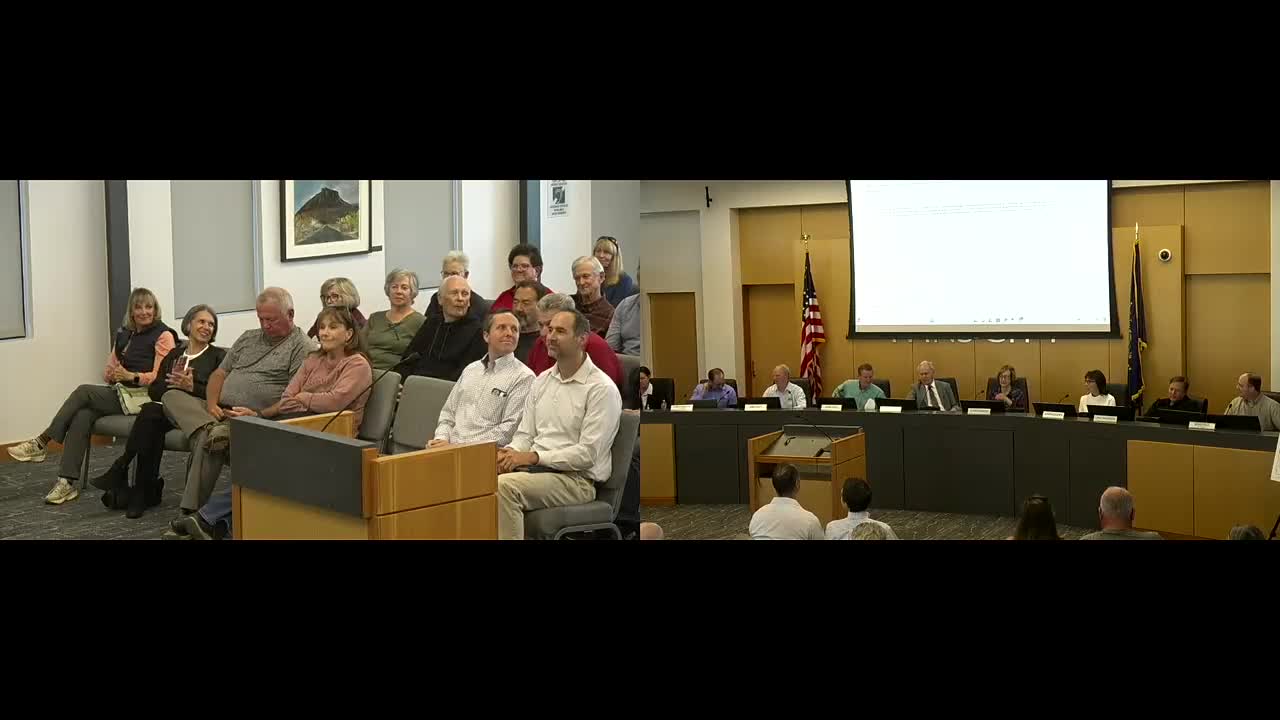Ivins council declines to send letter supporting Northern Corridor after split debate
October 16, 2025 | Ivins, Washington County, Utah
This article was created by AI summarizing key points discussed. AI makes mistakes, so for full details and context, please refer to the video of the full meeting. Please report any errors so we can fix them. Report an error »

The Ivins City Council voted down a motion to send an official city letter supporting the Northern Corridor — a long-debated east-west transportation route — after a lengthy discussion that exposed sharp divisions among council members and local stakeholders.
The question before council was whether Ivins should add its name to a portfolio of public comments the county and others were submitting during a BLM environmental review. Devin Snow, a Washington County attorney, explained that the federal right-of-way previously granted for the corridor had been rescinded under a prior administration and that a federal environmental review was now under reconsideration.
Cameron Rognan, the county Habitat Conservation Plan (HCP) executive director, briefed the council on biological tradeoffs tied to the corridor and the reserve. Rognan told the council the corridor itself would impact roughly "40 to 50 desert tortoises" in the footprint of the road, while development of a separate area called Zone 6 would require moving an estimated "400 to 500 desert tortoises" to farther reserve areas — a much larger relocation effort, he said.
Opponents of the corridor highlighted ecological and scenic concerns. Ed Andrzejczyk, president of Conserv Southwest Utah, said the corridor would "destroy critical desert tortoise habitat," sever recreation trails and cause visual impacts in the Red Cliffs Desert Reserve. Andrzejczyk argued the BLM's decision to rescind the right-of-way in December 2024 followed complex environmental analyses and should not be reversed via a narrower environmental assessment.
Proponents stressed the corridor's transportation utility and long-standing planning history. A county representative said traffic engineers since the 1980s have concluded a regional bypass is needed and that prior federal legislation expected a northern route to serve the region. He said the corridor, as currently scoped, would disturb about 150 acres and would be accompanied by a larger reserve of about 6,000 acres for tortoise mitigation if the project advanced.
After discussion councilmember Lance (surname not specified in transcript) moved to send a letter of support; the motion was seconded. At roll call the chamber recorded multiple "ayes" and multiple "nays" and the motion failed; the council chair said "Motion fails." The transcript shows at least three ayes and two nays before the motion was called failed.
Council members who spoke noted the political and legal complexity, some members asking for more study and others saying the corridor fulfilled earlier federal and local commitments. The county attorney said there was no active lawsuit on the issue because a prior suit had been dismissed and the federal agencies were cooperating on a reassessment.
No additional action was taken; the council did not send a letter supporting the corridor.
The question before council was whether Ivins should add its name to a portfolio of public comments the county and others were submitting during a BLM environmental review. Devin Snow, a Washington County attorney, explained that the federal right-of-way previously granted for the corridor had been rescinded under a prior administration and that a federal environmental review was now under reconsideration.
Cameron Rognan, the county Habitat Conservation Plan (HCP) executive director, briefed the council on biological tradeoffs tied to the corridor and the reserve. Rognan told the council the corridor itself would impact roughly "40 to 50 desert tortoises" in the footprint of the road, while development of a separate area called Zone 6 would require moving an estimated "400 to 500 desert tortoises" to farther reserve areas — a much larger relocation effort, he said.
Opponents of the corridor highlighted ecological and scenic concerns. Ed Andrzejczyk, president of Conserv Southwest Utah, said the corridor would "destroy critical desert tortoise habitat," sever recreation trails and cause visual impacts in the Red Cliffs Desert Reserve. Andrzejczyk argued the BLM's decision to rescind the right-of-way in December 2024 followed complex environmental analyses and should not be reversed via a narrower environmental assessment.
Proponents stressed the corridor's transportation utility and long-standing planning history. A county representative said traffic engineers since the 1980s have concluded a regional bypass is needed and that prior federal legislation expected a northern route to serve the region. He said the corridor, as currently scoped, would disturb about 150 acres and would be accompanied by a larger reserve of about 6,000 acres for tortoise mitigation if the project advanced.
After discussion councilmember Lance (surname not specified in transcript) moved to send a letter of support; the motion was seconded. At roll call the chamber recorded multiple "ayes" and multiple "nays" and the motion failed; the council chair said "Motion fails." The transcript shows at least three ayes and two nays before the motion was called failed.
Council members who spoke noted the political and legal complexity, some members asking for more study and others saying the corridor fulfilled earlier federal and local commitments. The county attorney said there was no active lawsuit on the issue because a prior suit had been dismissed and the federal agencies were cooperating on a reassessment.
No additional action was taken; the council did not send a letter supporting the corridor.
Don't Miss a Word: See the Full Meeting!
Go beyond summaries. Unlock every video, transcript, and key insight with a Founder Membership.
✓
Get instant access to full meeting videos
✓
Search and clip any phrase from complete transcripts
✓
Receive AI-powered summaries & custom alerts
✓
Enjoy lifetime, unrestricted access to government data
30-day money-back guarantee


